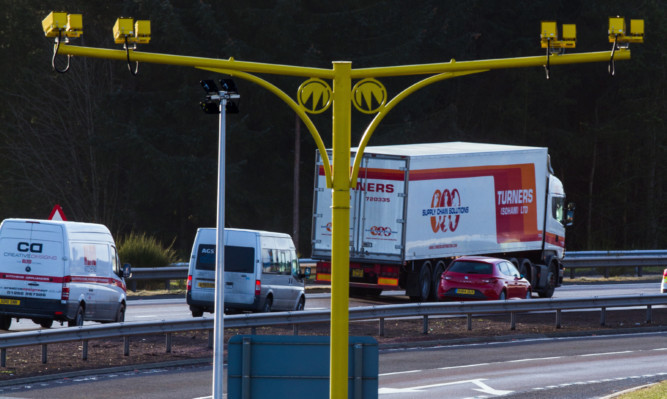Transport minister Derek Mackay has rejected allegations he is “misleading the public” with new data showing a dramatic drop in serious A9 accidents.
Figures released yesterday reveal a huge cut in the number of serious and fatal crashes between Inverness and Dunblane since controversial average speed cameras were installed at the end of October, 2014.
The numbers from Transport Scotland show fatal or serious crashes along the 136-mile stretch were down by almost 59%, while the amount of people seriously injured or killed in accidents had dropped by more than 64%.
The Scottish Government roads authority said the figures show the downward trend is continuing, with no fatal accidents on the A9 in the second half of the year.
However, a critic of the safety cameras has argued the figures were misleading with the number of fatal accidents on the Perth to Inverness section rising from four in 2013 to five during the cameras’ first 12 months.
Mike Burns, of the A9 Speed Cameras is Not the Answer campaign, said: “By continuing to hide the true figures with some dubious massaging of the statistics, there is no confidence that these figures represent the true driver experience.”
A Transport Scotland spokeswoman said: “The comments made by Mike Burns have no basis whatsoever with significant casualty reductions being experienced across all areas where the average speed cameras were introduced.”
Mr Mackay added: “Look at the whole route look at the whole package and you will see that the road is generally safer.
“Excessive speeding is down, fatalities and casualties are down, so I think it is pretty in-depth and convincing that the package of measures enforcement and education is working.”
He said: “We don’t control these figures. These statistics are showing that we deployed the right measures.
Mr Mackay added: “There are still a few critics out there who can’t change their position and I understand that, but I think the facts now speak for themselves and people should stop trying to score petty points when we are talking about road safety and human lives.”
Police Scotland Chief Superintendent Andy Edmonston welcomed the figures. “It is apparent the safety cameras have contributed towards changing driver behaviour, particularly in respect of complying with speed limits,” he said.
“Since the cameras were introduced just over 6,000 vehicles have been detected travelling at excessive speed and subject to enforcement action. To put some perspective on this figure, during this period there were 18 million vehicle movements along this route.”
